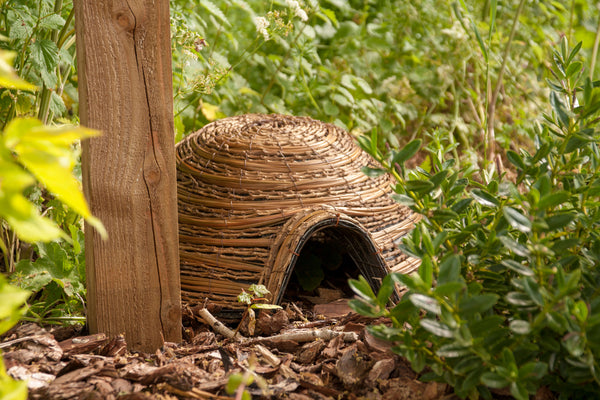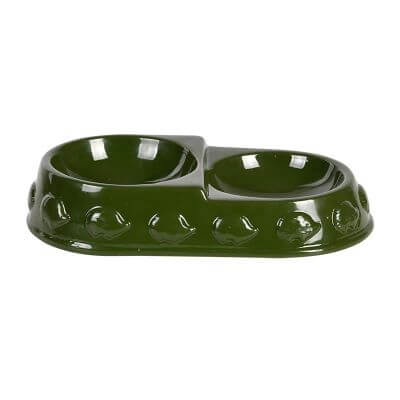Are Hedgehogs Endangered? And What We Can Do to Help?
Hedgehog 101
A British hedgehog (also known as Erinaceus europaeus or a European hedgehog) is a spiny mammal. This species of hedgehog is found from the east Midlands to Scandinavia! Erinaceus europaeus is the most common hedgehog in western Europe and the British Isles.
If you spot a hedgehog wandering through your garden, chances are it's an Erinaceus europaeus! In the eastern half of Europe, the Erinaceus concolor is far more popular.
Hedgehogs eat Invertebrate species like beetles, earwigs, and caterpillars. They find bugs by scavenging through the undergrowth and digging in the soil. Hedgehogs are very important in maintaining a healthy ecosystem.
Hedgehogs insatiable appetite for insects allows them to effectively manage invertebrate populations. By doing this, hedgehogs keep gardens healthy and the whole environment in check! They are amazing little animals. Did we mention they’re also so cute!
Hedgehogs hibernate for most of the year. They are often seen from early March to early May. During this time, hedgehogs are trying to find hedgehog food to prepare for their long hibernation. Hedgehogs will usually come out of their nests at night when it is safer and quieter.

Hedgehog Rural Populations
Hedgehogs live in a broad variety of habitats. They can often be found in rural areas with plenty of space and open farmland. A wider landscape tends to be more accessible and far safer than busy areas with lots of people and cars.
Road mortality within hedgehogs is infamously high. As per roads surveys, up to 100,00 hedgehogs die on the road each year. Because of this, hedgehogs will often gravitate toward places without a significant threat, like rural landscapes. Hedgehog sightings will be far more frequent in quiet areas!

Hedgehog Urban Populations
Hedgehogs prefer villages over bustling metropolitan cities! But this doesn't mean they won’t still be spotted in urban areas. Hedgehogs can always be found in grassy suburbs of urban areas. However, you’re definitely not going to see one in the middle of a shopping mall!
Hedgehogs can’t travel as quickly (or easily) within urban spaces. It’s also more difficult to find sources of food. However, they are determined and resourceful creatures! They will make the most of green spaces in housing developments, or a leafy back garden if they think they may find some food.
As habitat fragmentation becomes more pertinent, hedgehogs have to adapt to survive. In turn, causing populations to gravitate toward urban areas.

RSPB’s Breeding Bird Survey
The RSPB’s Breeding Bird Survey found that since 1996 there has been a 66% decline in hedgehog populations. Additionally, the data indicates that rural hedgehog populations declined by ½ in rural areas and a ⅓ in urban areas.
Five ongoing surveys are currently looking at the state of the hedgehog populations in the last decade.
Hedgehog Street also reports that in the past couple of years there is evidence the declining hedgehog population is recovering. These results are certainly promising. Fingers crossed the brilliant efforts of wildlife charities are paying off!
We want to make sure hedgehogs are crawling around our neighbourhoods for the next million years!

What Are the Main Pressures Hedgehogs Face?
Habitat Loss
Hedgehogs are threatened by the loss of their habitat. Hedgehogs suffer as cities continue to get bigger and farms plant more crops. In urban areas, there is often a lack of suitable habitat for hedgehogs.
In rural areas, the creation of farmland and field margins and the transition to different farming practices has led to a long historic decline in hedgehogs.
Changing landscapes are compounded with the use of toxic chemicals on gardens and crops. Chemicals kill the insects’ hedgehogs rely on for food and can also harm hedgehogs directly.
It has become increasingly apparent that hedgehogs are threatened by both habitat loss and modern agriculture. To change this, land managers all over the England regions should transition to hedgehog friendly practices!

Climate Change
Climate change results in wetter, warmer winters. This weather forces hedgehogs out of their hibernation early. During autumn, there is significantly less food available for hedgehogs. As a result, hedgehogs may starve.
This is because there is no extra sustenance to sustain the energy used to forage. Climate change is partly responsible for the struggles hedgehogs face today.

Predators
Hedgehogs are facing a myriad of pressures in the modern world. Another of these is predators. Rural hedgehogs are commonly eaten by large birds and ferrets.
In specific countries, other wildlife like wolves and mongooses can also pose a threat. Urban hedgements suffer from domestic pets, foxes, and badgers.
One of the best things you can do to protect hedgehogs in your area is to watch your pets. Try to monitor their activity in your own garden, garden boundaries, and neighbouring gardens. If you notice day hedgehog sightings reduce over the months or years, your pets may be part of the problem.
Helping hedgehogs whenever you can is key to ensuring populations thrive!
Are Rural Hedgehogs an Endangered Species?
No, hedgehogs are still very common in rural and urban areas. However, their populations are gradually declining. Habitat loss, climate change, and an increase in predators have all hurt hedgehogs. The Hedgehog Preservation Society BHPS has some great tips for protecting hedgehogs.

How to Protect Urban and Rural Populations of Hedgehogs
These are the best individual and community actions we can take to protect our hedgehog friends…
Create a Wild Corner with a Hedgehog House
Creating a wild corner in your garden promotes hedgehog safety. A shady, leafy section of your garden enables hedgehogs to forage, rest, and rest in safety. The BBC Wildlife Magazine recommends this as a low maintenance and very effective method to help your local hedgehogs.
To make a wild corner, simply find a shaded area and add extra plants and foliage to it. You can also purchase a hedgehog house from a garden centre or build your own from plywood!

Avoid Using Chemicals
Chemicals in your garden can inadvertently poison hedgehogs. Avoid using chemicals and instead opt for natural methods of pest control and fertilisation.
Hedgehogs live and eat in your garden all the time. Try to help hedgehogs as much as possible! This helps to maintain a stable population.
Make a Compost Heap
A compost heap is one of the many easy, environmentally friendly landscape features to incorporate into your garden. Don’t prevent hedgehogs from entering your garden, try to encourage them. A compost heap does this very well!
Compost heaps are a great nesting site for hedgehogs and can be used as safe spaces to forage. If you live in an urban area, the compost heap can be a stark contrast to the uninhabitable concrete jungle.
Provide Food and Water
While hedgehogs love invertebrates, it’s not practical to find bugs to feed to them. Instead, you can feed hedgehogs wet or dry dog food you have available.
If you don’t own pets, you can also feed hedgehogs protein or fresh fruit. Note that fruit should only be given to hedgehogs in small amounts and as a treat. It’s not a staple in their diet!
Hedgehog Charities Need Help
British Hedgehog Preservation Society
The British Hedgehog Preservation Society, an Immediate group company, is an amazing charity to support! The Preservation Society consistently makes important advances to hedgehog conversation. They offer a wealth of free information to their readers.
A new report outlines how effective green spaces and local efforts are in protecting hedgehogs. This is a square gap to the more pessimistic reports of a few years ago. Much of this progress is thanks to the tireless efforts of the British Hedgehog Preservation Society.
Donate now to ensure this important wider management continues for years to come!

People’s Trust for Endangered Species
The People’s Trust for Endangered Species has been supporting endangered wildlife for over 40 years! The trust works with the public, scientists, and conservationists to save protected animals and save our fragile ecosystem. People’s Trust for Endangered Species has all the latest news on protected animals and hedgehog friendly practices.
There is a whole raft of invaluable, free information on their website. The trust conducts research into hedgehog populations and offers advice for supporting hedgehog populations. PTES has recently partnered with the Preservation Society to coordinate hedgehog preservation efforts across the UK.
While hedgehogs are not yet an endangered species, it’s always helpful to understand the wider climate of animal conservation in addition to hedgehog preservation. Other similar media ltd will also be very helpful in furthering your knowledge!










